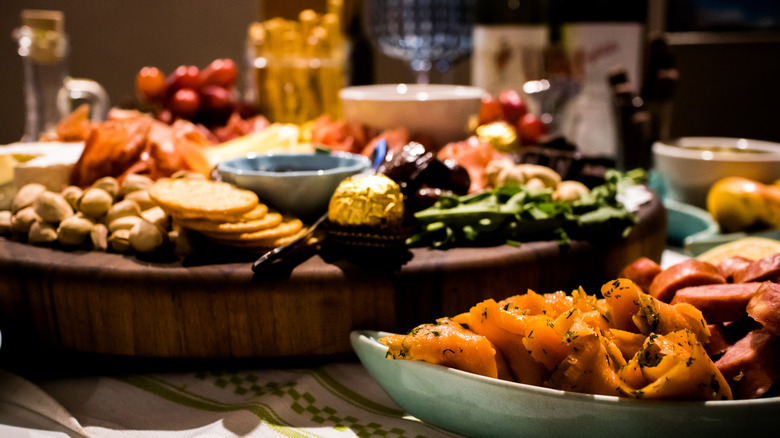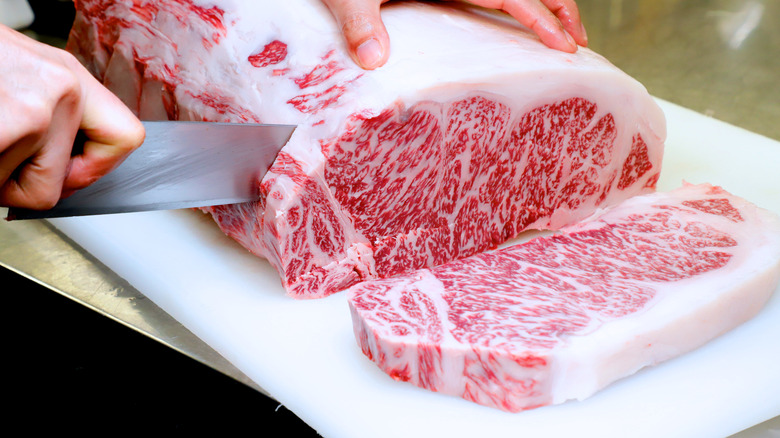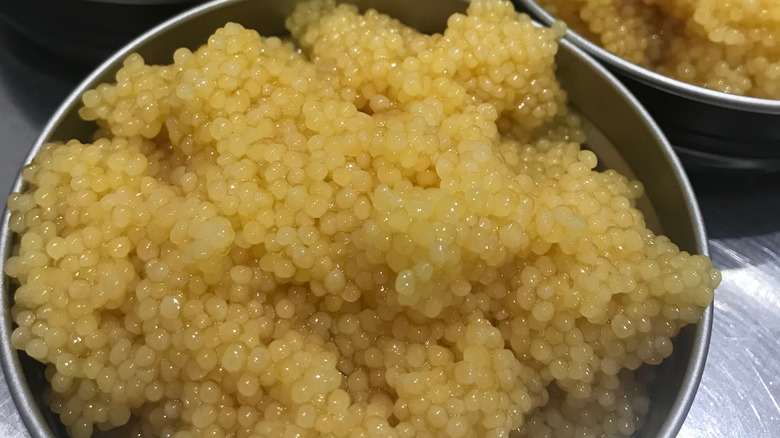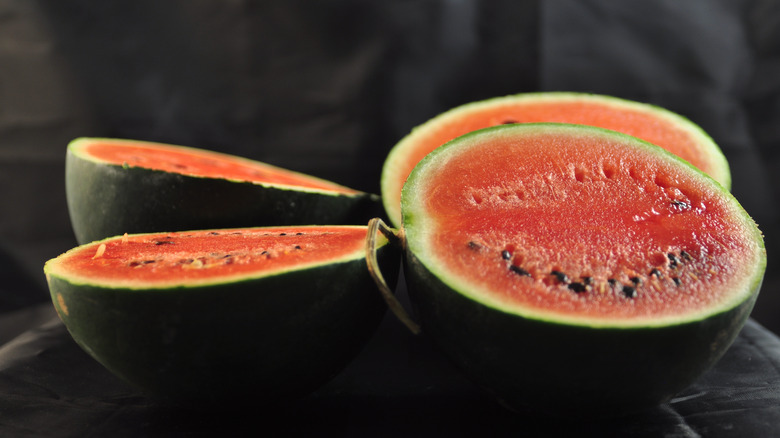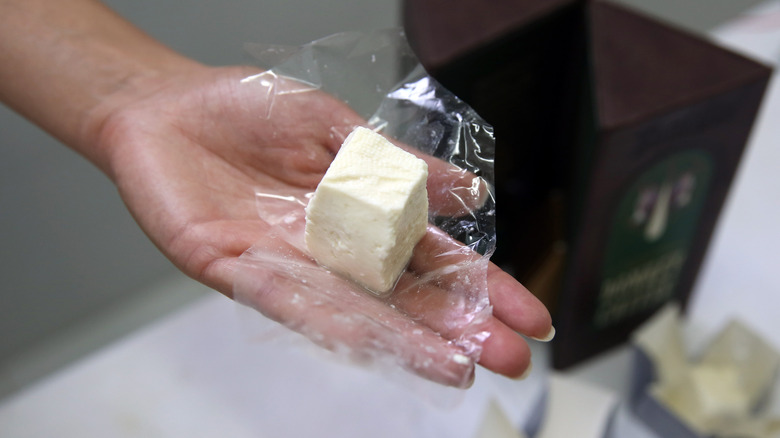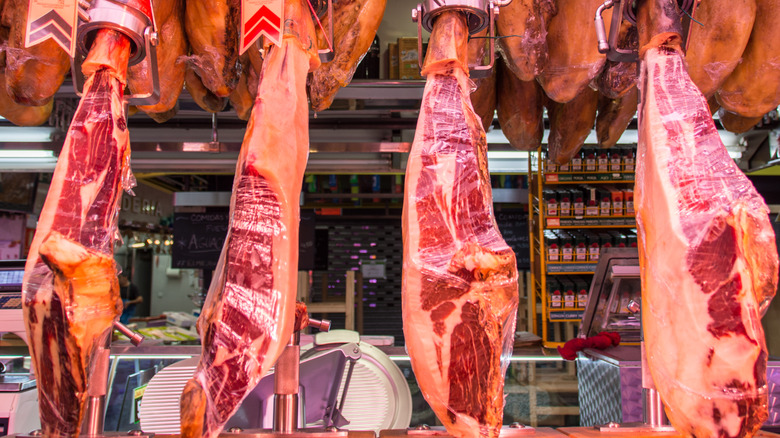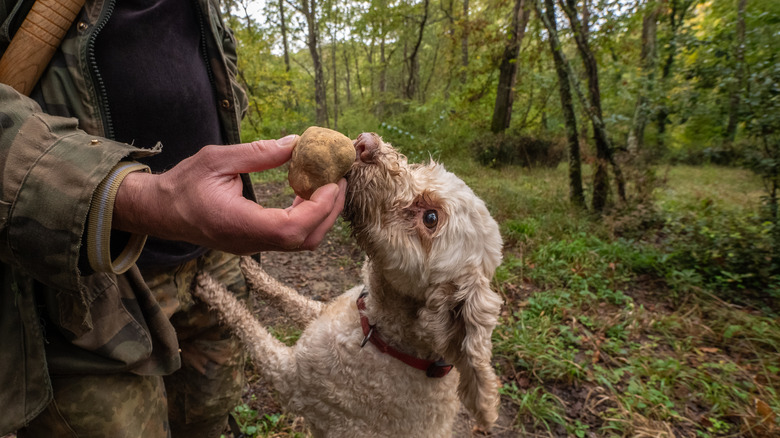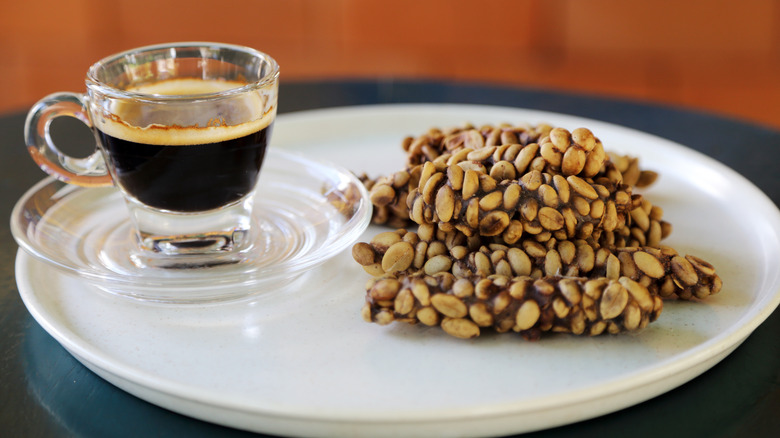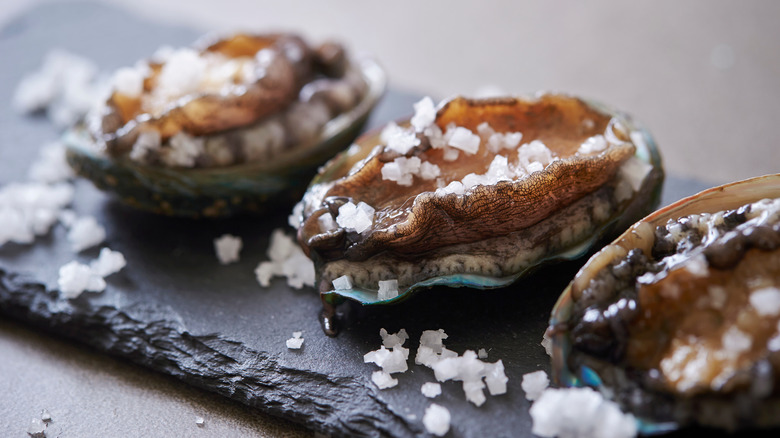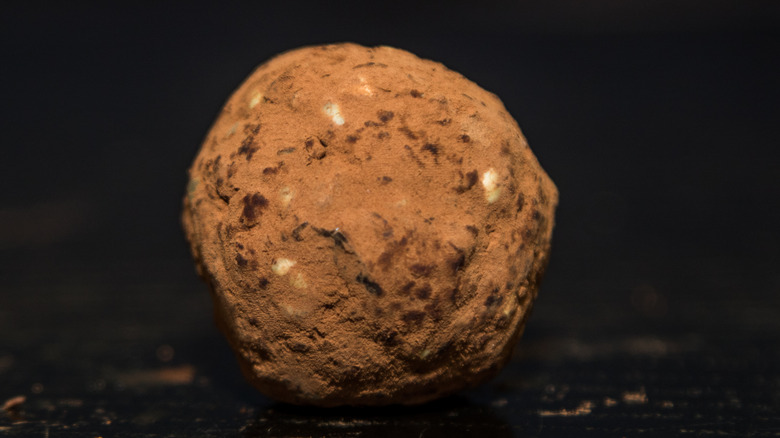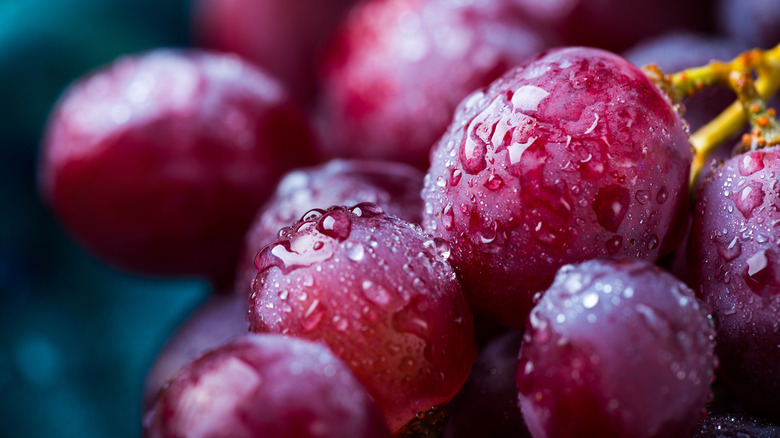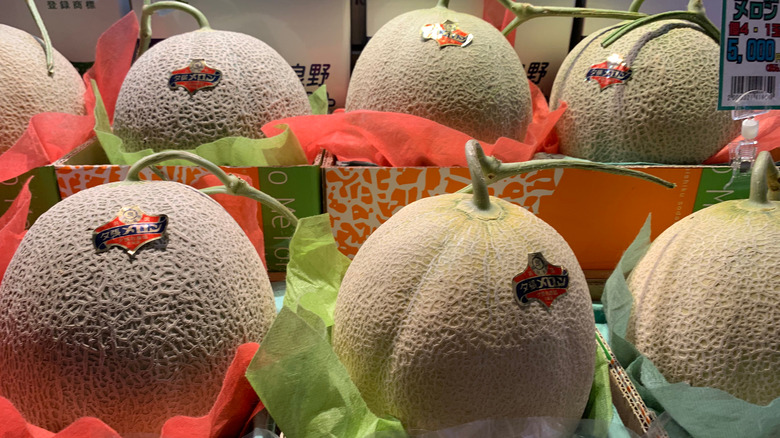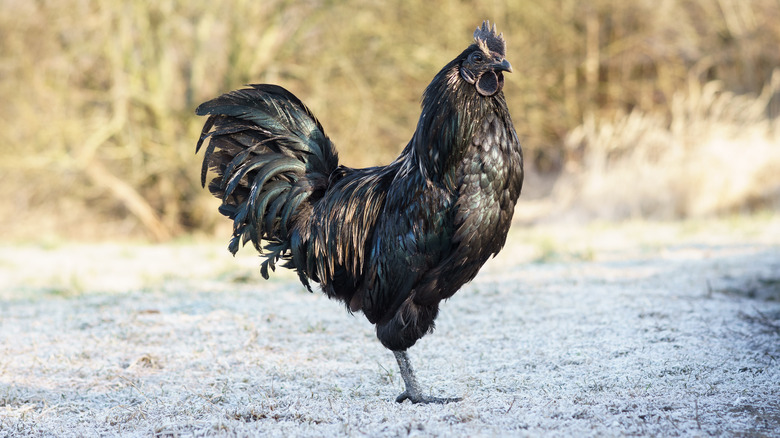The 12 Rarest Foods You Need To Try At Least Once
Every foodie has a bucket list of special dishes they intend on trying at least once in their lifetime to gain those ultimate bragging rights. Sometimes those dishes are simple and don't require much effort to obtain, but other times, in order to sample them they require extensive travel and a whole lotta moolah. These are the rare diamond-in-the-rough items that frolic through the heads of the food-obsessed every night while they dream. They're the sacred white buffaloes of the food world that seem unattainable. These are the bucket-list items that hold a special asterisk next to their names based on prestige.
To the average person, it might seem insane to put so much effort into obtaining a taste of the rarest foods on the planet. However, any food-driven personality laughs at that sentiment, knowing full-well the culinary prize waiting for them at the end of the journey is something few might understand. Just like with someone obsessed with finding rare coins or ancient artifacts, the foodie world is enamored with collecting new flavors. And while flavors may only last a fraction of the time a physical artifact does, the memory of a taste lingers for years to come. That's what makes everything worth the effort (and money).
If you're someone who loves all things food (of course you are), then don't let these rare food items slip through your fingers before it's too late. Food regret, as you know, is the worst kind of regret.
Japanese Kobe Beef
If you visit upscale supermarkets, they usually carry more elusive cuts of meat like Wagyu or Kobe. But, before you sprint off to your local Whole Foods clamoring over the incredibly marbled cuts of Kobe beef, just know the meat you're seeing likely isn't the authentic thing. Sorry everyone, but real Kobe beef is incredibly rare and likely not what's presented in those display cases.
It's an unfortunate reality for foodies everywhere gazing at menus with smiles plastered across their faces as their eyes laser-focus on the Kobe beef option. The Kobe beef they see on the menu is often a hybrid of American-raised Wagyu and all-too-common Angus. The combination is known as "wangus," and then it's passed off as Kobe beef (bait-and-switch much?). In fact, "Inside Edition" investigated the Kobe beef served in Le Bernardin, a prestigious three Michelin-starred restaurant in New York City, and the establishment refused to produce the official Kobe beef certification, even though they claimed to serve an authentic Kobe beef lunch. In fact, there are only eight restaurants in the country licensed to serve authentic Kobe beef. But, why is it so rare? Well, all that sensational marbled beef comes from cows inseminated by only 12 specific bulls that are kept in a special facility in Japan. So, the next time you see "Kobe beef" on a menu, don't get too excited. You'll have to do some research in order to find the real stuff, but it's entirely worth the effort.
Almas Caviar
Ah, caviar. Just the name alone conjures up images of overly fancy parties and expensive restaurants. Sushi fanatics have likely eaten caviar in the form of tobiko (flying fish roe) or ikura (salmon roe). These types of caviar are usually found in Japanese restaurants, as they aren't difficult to obtain. In fact, most Asian grocers will have at least a small selection of affordable caviar for purchase. However, this doesn't mean caviar can't reach insanely high prices. In fact, one of the rarest types is called Almas caviar, and if you're a foodie who loves those tiny poppable eggs, this stuff will catch your attention.
The word "Almas" means "diamond” in Russian, so right off the bat you know you're dealing with something highly prized and very rare. The animal responsible for this prized pearly white caviar is the albino beluga sturgeon that lives in the Caspian Sea near Iran. Their lack of melanin makes them albino, and because it's such a rare genetic mutation, there aren't many left in existence (also a very good reason not to eat it). In fact, the only place you can even find Almas caviar is at one of the few Caviar House & Prunier stores around the world. For those who do shell out the cost of eating it, the caviar is delivered in a 24-karat gold-coated container.
Densuke Black Watermelon
When the dog days of summer hit you like a ton of bricks, few fruits hit the spot quite like a juicy watermelon. Nothing's better than slicing into those massive green orbs and feasting your eyes on the perfect red center. Heck, watermelons are so popular that we have watermelon eating contests. However, don't ever expect to find a watermelon chomping contest using Densuke black watermelons from Japan. These bad boys are way too rare and expensive to waste, and there's a good reason behind the price tag and elusiveness.
One of the reasons for the high cost is the melons are strictly grown on Japan's island of Hokkaido, and less than 100 are harvested every year. This means the supply is extremely low and the price tags are outrageously high. In fact, in 2008, one of the watermelons sold for a whopping $6,100 at auction! "This is the highest price on record for a Densuke watermelon, and that probably means it's the highest of any watermelon in Japanese history," said Kazuyoshi Ohira, a spokesman for Hokkaido's Tohma Agricultural Cooperative.
Apparently, the sweet flavor packs a Mike Tyson-punch that the green watermelons grown all over the world could never attain, and the outer dark green skin (which often can appear black) is extra tough. That's a good thing, because the world's rarest watermelon definitely needs some additional protection.
Donkey Cheese
For many people, cheese is one of the main food groups. C'mon now, how could it not be? There are so many different varieties for people craving all sorts of flavor profiles. Looking for a smooth and gentle flavor? Try a mild cheddar. Seeking out something robust that lets you know it's arrived once it hits your tongue? You're gonna wanna rock'n'roll with Roquefort. There are plenty of queso enthusiasts out there who claim they've tried every variety the world has to offer, but it's more than likely one has evaded them: pule donkey cheese.
At $600 a pound (yes, you read that correctly), this cheese isn't geared toward your average consumer. Why the exorbitant price tag? Well, not only does it take months to make, but there's literally only one farm in the world that produces it using Balkan donkeys, and it's located inside Serbia's Zasavica Special Nature Reserve. The farm was founded 24 years ago by a man named Slobodan Simić, and it's just one of three sanctuaries that protects the endangered donkeys. Simić said of the unique cheese-making process, "No one can make it. Not just at home, but well-known milk experts from many countries have tried to make it, and they have failed. That's because of the additional bacteria and substances invented by our expert that succeeded in coagulating the milk, which is known to have little casein for coagulation. Many have tried, but no one managed to make it."
Jamon Iberico
When it comes to hooking up that sweet charcuterie board for the slew of guests you have arriving, there are plenty of cuts of pork that can comfortably find their home among the rest of the cheeses and accompaniments. Salami, soppressata, and prosciutto are all popular options, but there are several other savory options of Babe available too. However, one meat you're likely never to see (unless the person hosting the party has a lot of money to burn) is Jamon Iberico. This is one of those rare cuts of meat that has you thinking about it long after you finish what's left on your plate.
It probably comes as a surprise that the reason for the incredible taste of the Iberian pigs who produce the meat is a heavy diet of acorns. From early October to early March, the free-range pigs roam the Iberian peninsula like it's a massive all-you-can-eat buffet and eat up as many acorns — which are rich with fat — as they can. After a few years of this frantic acorn foraging, the pigs are slaughtered, and the intense and lengthy work begins to ready the meat for consumption. After the skin is removed, the curing process can take up to three years, and sometimes even longer! The meat cannot graduate to the next level of production until specialists with highly trained senses of smell give it the go-ahead.
White Truffles
You can't mention truffles in a sentence without someone speaking up and saying "Oh my god, I just love truffles!" Truffles are incredible. They add a pungent but earthy layer to a dish's overall flavor that really makes you feel like you're eating something elegant. The most common type of truffle you find at a restaurant is black truffles. Even though they come with a price tag worthy of an eyebrow raise, having a couple grams shaved onto a sizzling steak is more than worth it. Fewer restaurants carry the brethren of black truffles: white truffles. These are the head honchos that really launch flavors into outer space, and with a characteristic like that, no wonder they're rare.
The 18th-century epicurean Jean Anthelme Brillat-Savarin referred to truffles as the "diamonds of the kitchen." But, why exactly do truffles — especially white — come at an enormous cost? It all has to do with the legwork put into retrieving them during harvest season. From the short timespan of October to December every year, white truffles grow in abundance throughout Italy's Piedmont region. In order to find them, truffle gatherers use specially trained dogs to sniff them out from underneath the soil. Yea, it's a whole lotta effort, and that means a high price. Of course, you can buy white truffle oil or certain foods infused with a white truffle aroma, but they're no substitute for the rare occasion where you can get fresh white truffles shaved over a meal.
Kopi Luwak Coffee
"America runs on coffee." There are few truer statements than that. If you go to New York City, you can't walk more than a couple blocks without seeing a Starbucks. America is littered with coffee places with the intention of getting you jacked up for the workday so you can produce, produce, and produce all day long! Heavy coffee drinkers all have their favorite brands, but would any of them ever ditch their precious 'Bucks or Dunkin' for the world's rarest cup of Joe made from ... animal feces?
Of course not, right? Well, as it turns out, there's actually a reason people shell out nearly $500 a kilogram for Kopi Luwak coffee. The entire process starts with an Asian palm civet, a small cat-like animal native to South and Southeast Asia. These animals love munching down coffee fruit, and they're extremely picky when it comes to the coffee fruit they eat. Inside the civet's stomach, the beans beneath the pulpy outer fruit then undergo an extensive fermentation process due to digestive enzymes that give them a super unique flavor. Then, once completely digested, the civet excretes the beans, and local farmers collect the feces to begin the coffee-making process. While the result is a rare cup of joe, the process has also come under criticism as some coffee producers have moved from collecting the feces of wild civets and opted for the inhumane treatment of caged civets. Case in point, do your research before sipping!
Abalone
There are a handful of staple items you expect to see on a menu when you dine at a seafood joint. You'll see lobster. You'll see crab. You'll see shrimp. There's bound to be quite a variety of fish, as well. However, one item you likely won't see is abalone. Maybe you never even saw that word until right now. Few restaurants serve it, which makes it all the more exciting to foodies when they see it grace the page of a menu. Nicknamed the "ear-shell" based on its resemblance to human ears, this is one of the rarest and most expensive shellfish in the world, and there's a good reason why.
Abalone is gathered from several regions around the world, including Oceania, the United States, and Mexico. The meat inside the polished iridescent carapace is like "eating two of the highest quality oysters at the same time," one person said of their experience. However, in order to enjoy a bite of the rich buttery crustacean, a ton of work goes into harvesting them. The abalone shells have a vice-like grip on the rocks they live on, making them a huge chore to remove. Also, due to the potential extinction of the species, many countries only allow fishermen to return with a maximum of 20 per day. Again, if you want to try this crustacean, do your research to ensure you're enjoying it from a fishery that practices sustainability.
La Madeline au Truffle
Even though chocolate sales soar through the roof around Valentine's Day, there's never really a wrong time to enjoy a box of the dark sweet stuff. Chocolate addicts everywhere know the struggle of walking past a Godiva shop and forcing upon themselves the self-control to not go inside and raid the shelves like Armageddon was coming. It's not easy, we know. However, the temptation to treat oneself to a hearty chunk of fudge or a rich milk chocolate bar needs tending to sometimes, but that doesn't mean you're willing to shell out hundreds of dollars just to scratch that itch. That's why the La Madeline au Truffle from a luxury chocolate company called Chocopologie is one of the rarest chocolate treats around.
Prepare to fork over 250 big ones for the 1.5-ounce nugget of decadence created by Fritz Knipschildt, Chocopologie's Master Chocolatier. The whopping price tag has several reasons behind it. Along with basic ingredients like sugar and heavy cream, the chocolate truffle is made with 70% Valrhona dark chocolate, truffle oil, and the epic star of the show: a rare French Perigord truffle from Europe. The truffle is nestled in the center of the exquisite chocolate coating for a chocolate treat that'll have anyone saying "I do" after receiving it.
Ruby Roman Grapes
When we think of kings, sometimes we envision servants draping bushels of plump grapes over the throned leaders' faces and allowing them to chomp away on those purple morsels bursting with sweet flavor. In fact, ancient paintings of Roman emperors often portray them at large gatherings holding cups filled to the brim with grape wine. But, if you're really looking to feel like royalty while you toss grapes into your mouth like popcorn, there are no substitutes for the super rare Ruby Roman grapes.
The first thing you notice about Ruby Roman grapes is the size. These things are like purple ping pong balls! The mass alone tells you they're already going to hold more flavor than your regular supermarket variety. According to a report by Insider, the grapes hit the Japanese market in 2008, and they're famed for their sweetness and low acidity. To keep exclusivity high, only a small number are sold, which means the lucky people who go home with them shell out some serious dough. In 2019, a hotel chain manager named Takashi Hosokawa paid $11,000 for just 24 of the grapes! Yea, do the math. That number boils down to roughly $458 per grape. Now, that's one heck of an expensive mouthful of sweet flavor.
Yubari King Melon
Peruse any produce section of your local grocery store and you'll see a wide variety of fruit. This isn't unusual. What is unusual, however, is never coming across a bruised or misshapen piece among the bunch. There's always a small percentage of fruit that looks unappealing. This problem, however, rarely exists in Japan, where fruit is actually seen as a way to show social or financial status. Therefore, nearly every piece of produce you see at Japanese markets is unblemished and picture-perfect. And, melons seem to have some of the most sky-high standards of them all.
The trick to growing such luxurious melons is a level of care and attention rarely even seen by caretakers of children, let alone food. Naturally, the best seeds are chosen to plant. But, the farmers keep a constant eye on the growth process, carefully pollinating the best buds using a paintbrush. Once a dominant melon begins to show, it's quickly removed so there's no other competition for nutrients. The melons even don a specially designed paper "hat" to protect them from potentially harsh sunlight. "I believe this is the most labor-intensive method out of all the melon farming all over Japan," said melon grower Masaomi Suzuki. This intense method was why a pair of Yubari King melons sold for just over $27,000 at an auction in Hokkaido. It's rare anything receives this much tender loving care, and that makes them a prime candidate for any melon enthusiast's bucket list.
Ayam Cemani Black Chicken
It's everyone's favorite expression to describe the way some new meat tastes: "like chicken." It seems like every animal on the planet tastes like chicken to someone. But, what about a completely black chicken? Would that still taste like a regular run-of-the-mill clucker? Do black chickens even exist? Yes, they absolutely do. They're called Ayam cemani chickens, they're indigenous to Indonesia, and they look like someone dunked them in a vat of jet black paint before letting them run amok.
The black pigmentation in their skin, obviously, isn't due to anyone forcing a tar bath on them. The coloring is caused by what scientists refer to as dermal hyperpigmentation. Breeders love this rare trait because it gives the chickens such a unique look, and they also claim the black pigmentation causes the meat to taste far superior in richness. Because they aren't known as the best egg-laying chickens, they aren't a common breed to raise, and that makes them all the rare and, therefore, expensive. If you are curious about them, you can get in touch with the Ayam Cemani Breeders Association for more information. Pretty soon you can wow your friends with your experience of eating "black" chicken.
